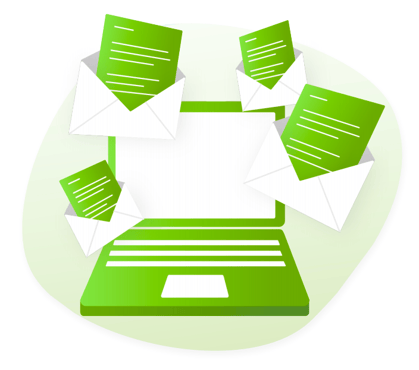
6 months in to my first sales job and I was struggling
The email struggle

I sat at my desk, frustratingly tapping my pen. It was July 2012 and I was 6 months into my first sales job, a business development role at a printing company in New York City. It was a typical sales gig: I spent my days at my desk, chiseling away at my long list of leads, firing off cold emails into the abyss, praying that one - just one - would get back to me with a nice, fat order of spiral notebooks.
After months of grinding, waiting for that big break, I was exhausted. Outbound sales will do that to you, and every hugely successful rep will tell you horror stories of the doldrums they needed to sail through. At times, I felt like giving up. At other times, I caught myself getting excited by “out of office” replies; they were better than nothing.
This struggle was certainly not due to a lack of effort. A couple of days prior, I spent hours writing, scrapping, rewriting, editing, and ultimately finalizing what I thought was a solid outreach template that clearly pitched our printing services in an exciting way to potential customers. It was my carefully constructed, meticulously worded masterpiece. I eagerly sent it to a couple of hundred prospects, hoping that this time, I’d get a solid response.
Radio silence.
Hours turned into days, and alone I sat at my desk, without the slightest acknowledgment. I barely got a “No, thank you,” or a “please unsubscribe me from your list.” I felt like I was walking through one of those bad dreams where you try talking, but nobody can hear you. I questioned everything… Was I that much worse than the guy who sat next to me ringing his celebratory gong three times a day? Was I not as smart as I thought I was? Did people simply not like me? How could I fail to reach even one person for a serious conversation, let alone convince them to pay me?
As far as jobs go for 22-year-olds, this seemed pretty cushy. I had a salary, health insurance, and air conditioning. I wasn’t out with my dad in my high school summer job, hauling rocks around a construction site in the hot sun. I kept reminding myself, “you’ll figure this out.” But the more I failed to do the one thing I was paid for - communicate - the worse I felt. Visibly failing at your job can throw you into a special level of emotional turmoil; one that makes you crave a simpler life with lower expectations. When it happens in a sales or another revenue-generating role, you get to watch your fears play out in real time as you languish at the bottom of your team’s digital leaderboard. Oh, how that screen made me long for a big pile of rocks to win back some dignity.
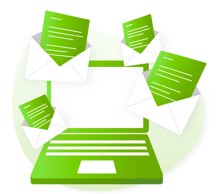 At the time, I felt hopelessly alone.
At the time, I felt hopelessly alone.
I didn’t know that there were hundreds of thousands of professionals in communication-focused roles similar to mine, like sales, recruiting, consulting and management, feeling the same frustration. And many of them were far more experienced than I was.
Many of our jobs revolve around email communication, whether you’re a manager at a major corporation, a salesperson at a small company, or a freelancer trying to find work— we all need to reach out to people and our success relies on receiving a reply. But according to the research organization TOPO, it takes an average sales representative 18 communications to connect with one buyer and 4 emails to get one recipient to even open one of them. That’s a lot of wasted time.
Why is it so hard to get responses?
With the rise of online communication, sites like LinkedIn, Facebook, Google, etc. have made it much easier to reach out to people. But this ease also creates a major problem: over saturation. As people grow more and more overwhelmed by the sheer amount of messages they receive, they become more likely to ignore the information they deem insignificant.
How do we break through the noise?

We all have the tendency to assume that everyone else wants to communicate in the same way we do. Real-world experience and listening intentionally to others teaches us that this couldn’t be further from the truth. People have very different backgrounds, feelings, thoughts, beliefs, and communication preferences, making it nearly impossible to communicate effectively without consideration for others’ style. Rather than ignorantly addressing someone in the way WE want, we need to learn to communicate the way THEY want. In a nutshell, we need to communicate with empathy.
In order to communicate with empathy, we need to understand our recipient’s personality
Understanding personality
Historically, the only way you would be able to fully understand someone’s personality is by either getting to know them really well, which takes lots of time and emotional intelligence, or having them take a personality test. Both of these approaches require that you have an established relationship with the person, which doesn’t tend to work in the world of outreach communication, since we are often trying to connect with new people who we have never spoken with before.
Thankfully, there is a new technology that unlocks another way to learn about someone’s personality without an assessment - Personality AI. We wrote about this in detail in another ebook titled, Personality AI (which you can download for free). The growth of artificial intelligence over the past decade is impacting us everyday, from what we see on social media to our music recommendations on streaming apps. We can even see a change in how products are being marketed with The Rise of Artificial Intelligence in Marketing.
Personality AI is a form of AI that seeks to help us communicate more effectively with each other. This new technology analyzes publicly available information on websites like LinkedIn to predict someone’s personality, using artificial intelligence and machine learning. We built our product, Crystal, to harness Personality AI and enable anyone to identify personalities online to improve their communication and build stronger relationships, all based on the core principle of empathy.
We built our product, Crystal, to harness this technology and enable anyone to identify personalities online to improve their communication and build stronger relationships based on empathy.
Without getting too technical, when Crystal’s AI predicts personality, it uses a framework called DISC to classify personalities into a few categories that we refer to as D (dominant), I (imaginative), S (stabilizing), and C (conscientious). Each of us has a primary DISC type in one of these categories and sometimes a secondary DISC type in another. To keep things simple, we separate these categories into easy-to-remember labels called Archetypes.
You can see them all on this graphic called the Personality Map:
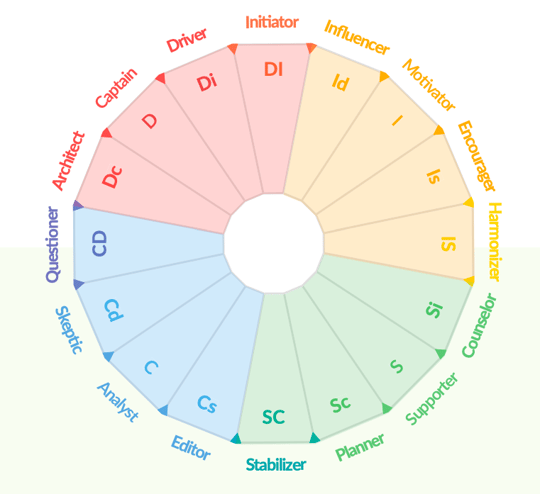
Below is a breakdown of common personality traits within each of the categories in DISC.
D Personality Types: Captains, Drivers, Initiators, Architects
• Motivated by control over the future and personal authority
• Tend to prefer instant, concrete results and having an advantage over competition
• Communicate clearly and succinctly
I Personality Types: Influencer, Motivator, Encourager, Harmonizer
• Motivated by innovative, unique, creative ideas and excited by the future
• Tend to prefer building new relationships and experiences
• Communicate in a casual, expressive way
S Personality Types: Counselor, Supporter, Planner, Stabilizer
• Motivated by peace, safety, and others’ wellbeing
• Tend to prefer security, reliability, and trust
• Communicate in a friendly and genuine way
C Personality Types: Editor, Analyst, Skeptic, Questioner
• Motivated by logic, information, and problem solving
• Tend to prefer accurate information and quality solutions (quality over quantity)
• Communicate in a business-like, fact-based way
These differences are extremely important to understand for your approach in every conversation with a customer or prospect. For example, someone who is a warm, people-oriented Supporter (S) is less likely to engage in a discussion about facts and data. They’d usually prefer to engage in a more personal, get-to-know-you conversation. An Analyst (C), on the other hand, tends to enjoy learning more about specific, concrete information.
By identifying someone’s personality type, we can learn how to best communicate with them, especially in written forms such as email.
Email Styles for Each Personality Type
Because each of the four DISC personality types tends to communicate differently, there are some key aspects to follow and avoid when emailing.
When emailing more dominant D-types, you should have a clear, concise subject and body. D-types prefer more formal, but brief emails in which they are called to an immediate action. Be careful not to include a surplus of detail or open-ended questions.
I-types are enthusiastic and energetic, preferring interesting visual aids over lengthy, informational blurbs. When emailing I-types, maintain an enthusiastic, casual, optimistic tone. Avoid being too serious or focusing on facts and figures.
S-types love to build personal connections; do this by discussing shared interests. It’s important not to skip pleasantries with S-types. Be consistent in using a kind, encouraging tone and try not to be forceful or overly direct.
C-types dislike unnecessary pleasantries; they value specific, concrete information, instead. Take the time to understand their reasoning for decisions by asking them questions, but do not skip over important information or involve emotion.
Writing the perfect email
When formulating an email, it is most important to consider three factors: What do they want? Why do they want it? How do they want to interact? Though understanding all three aspects of the interaction sounds difficult, Personality AI makes it easier than ever to effectively appeal to others, even in a form as brief and usually impersonal as email.
Subject
The subject line is arguably one of the most important parts of an email. It’s your chance to make a sparkling first impression within the mountainous pile of uninteresting jargon that is the modern buyer’s inbox.
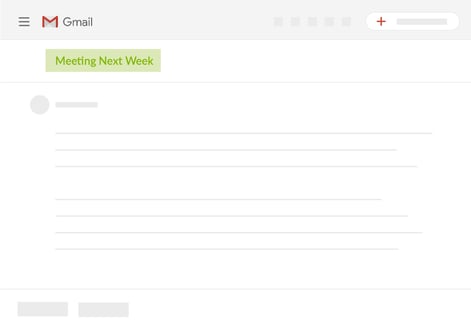
For more direct, D-types, focus on an enticing, straight to the point message.
Enthusiastic I-types need to be drawn in by a quick message about creative, new ideas.
Warm, S-types usually prefer something more subtle and friendly.
Information-seeking C-types are likely to crave an interesting fact, as long as it is later supported with data.
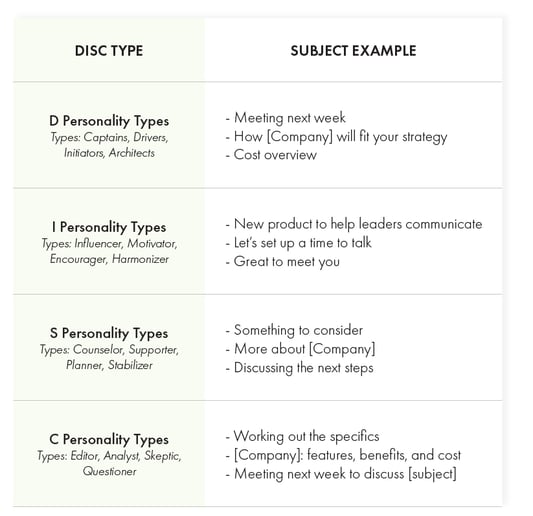
Greeting
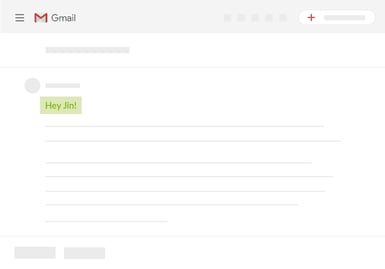
Personalities also respond differently to specific greeting types. Direct, straightforward D and C-types tend to prefer an email that skips pleasantries and quickly addresses the point. However, sociable, relationship-oriented I and S-types tend to prefer more personal introductions. This small adjustment can have a surprising impact on how the recipient thinks about the rest of your message.
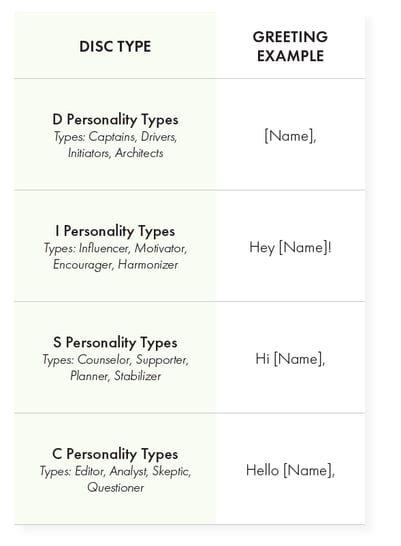
Body
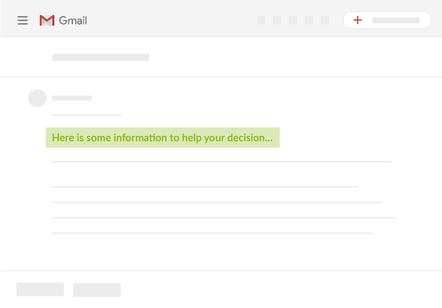
Personally, there’s not much I dislike more than a lengthy, data-filled email discussing case studies and surveys for a service that I’m not even sure I need. As an Influencer (I), it doesn’t move me or inspire me. It looks more like homework that I did not ask for.
However, for my friend Anna, who is an Analyst (C), longer emails focused on data and details are likely to be more effective.
While some people appreciate an email with details and attachments, others prefer one sentence or less that has the bare minimum.

Personalities near the top of the Personality Map, D-types and I-types, tend to value brief, effective emails; however, those near the bottom of the map, C-types and S-types, prefer longer emails that establish trust.
In a similar vein, types toward the right of the Personality Map, I-types and S-types, tend to prefer a more casual tone, while on the left side, D-types and C-types enjoy more formal, business-like language.

Call to action
The call to action is the driving force in an email. This is where you can make a request of the recipient and entice them to reply. What are you trying to accomplish? What can the recipient do to help?
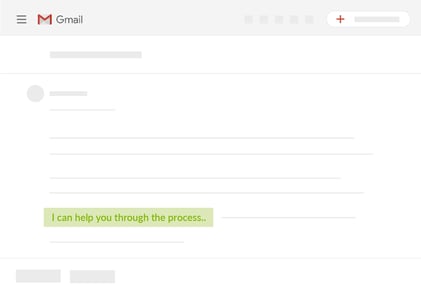
D-types usually want direct, clear communication, whether in a question or request.
I-types are likely to respond well to more personal language.
S-types tend to be driven by a care for others and usually appreciate being asked about themselves.
C-types generally like be given specific information and an opportunity to ask questions.
By asking the reader a question or giving them a direction, you’re helping to ensure a response. Below is a breakdown of how each personality types prefer calls to action in an email.
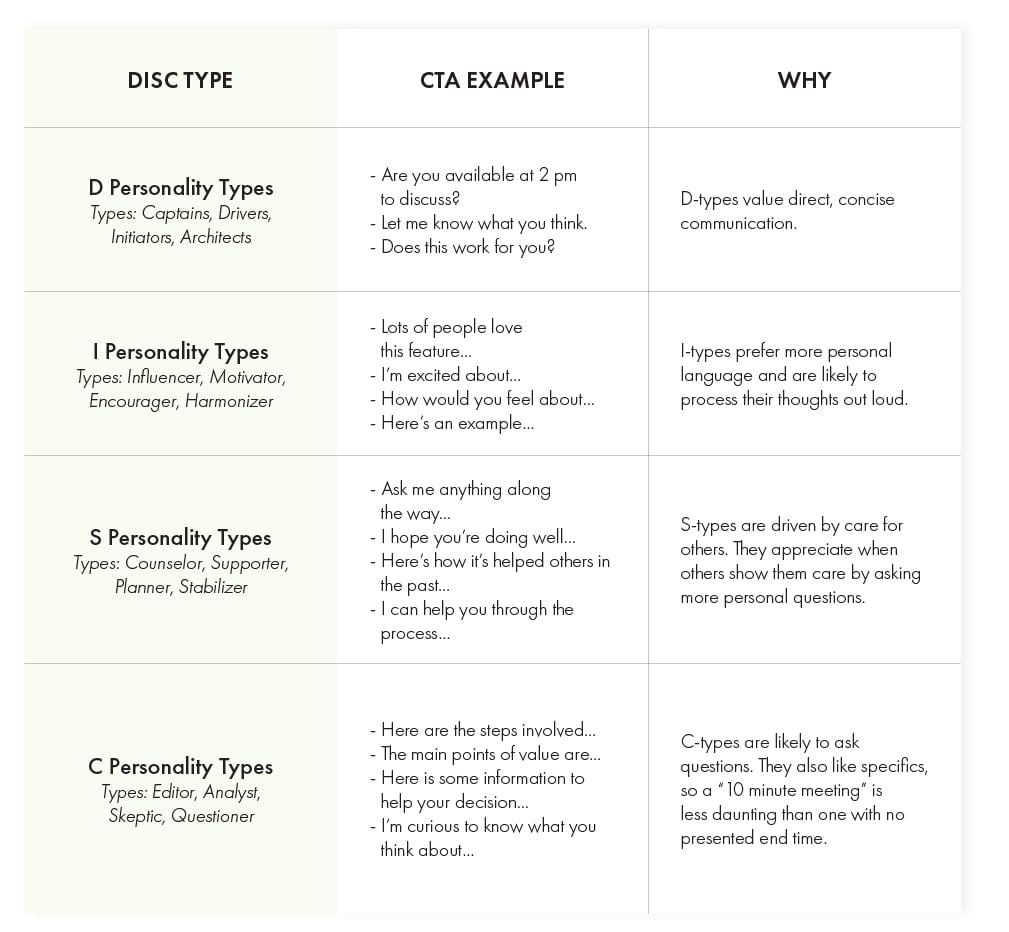
Closing
While the closing is less important than the other aspects of the email, different personalities are likely to appreciate specific ways of ending. Those on the left side of the Personality Map are likely to prefer a more succinct, business-like conclusion, while those on the right generally like one with more personality and connection.
What not to do
To help illustrate some of the issues with a basic email that lacks personalization, here’s an example of one of the dozens we receive every day.
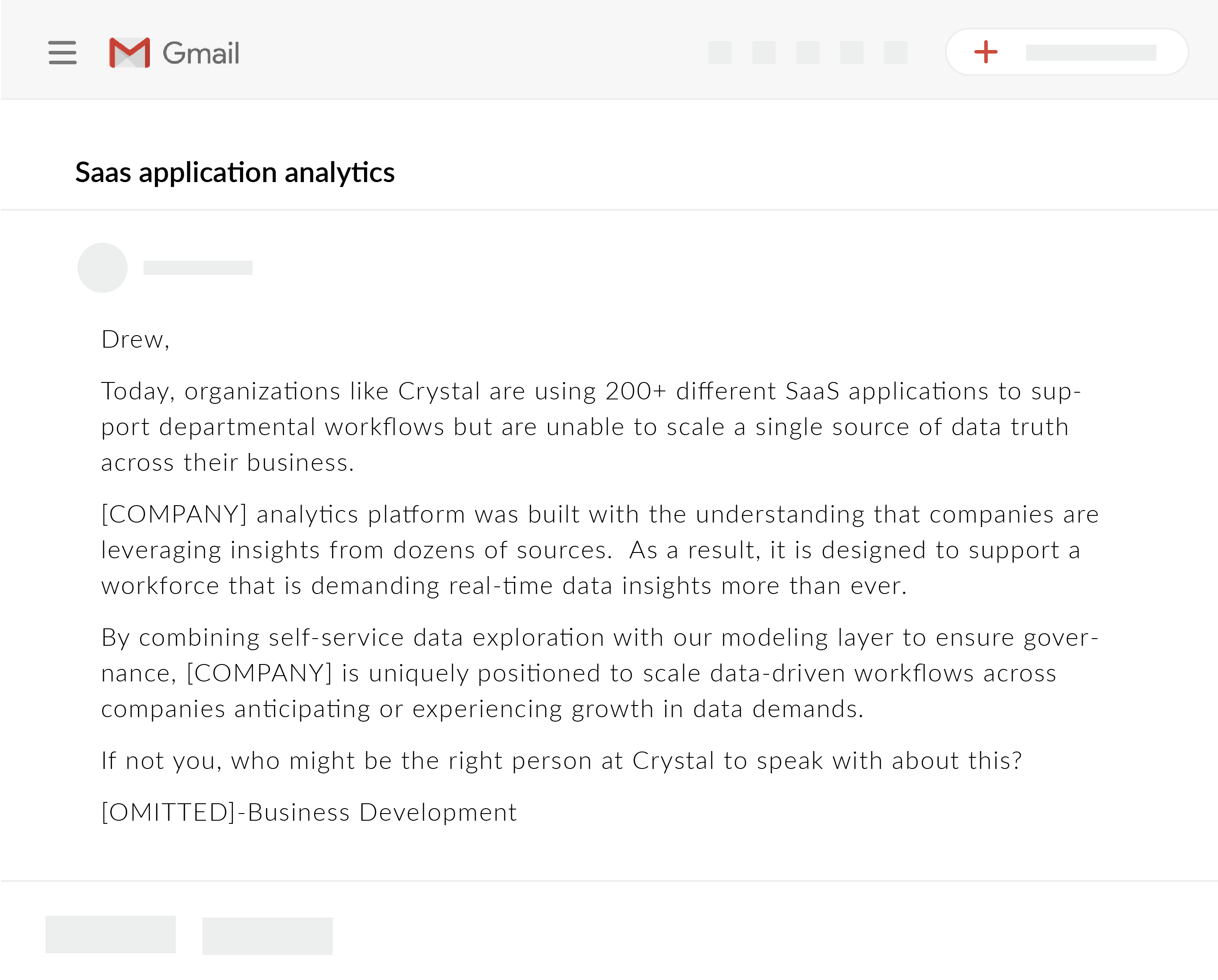
Unfortunately, this email lost me at the subject line.
The writer doesn’t address : WHAT I want, WHY I want it, or HOW I’d like to be addressed.
As an Influencer (Id)...
What do I want from a company like this?
Something new and innovative. What do they have to offer that is exciting and different from others like them?
Why do I want it?
Well, for starters, it’d be fun to be a part of something unique and fresh. Modern ideas excite me and drive me to participate.
How would I like to be addressed?
I’d like for someone to write to me in a casual, more relaxed tone. Anything creative or original they have to offer in their original email is lost in the dense language.
 The formality leaves me unamused, unenthused, and uninterested.
The formality leaves me unamused, unenthused, and uninterested.
While this email may have worked for a more fact-interested Analyst (C), the salesperson lost me at the start. In this technologically advanced but oversaturated world, we are likely to skip over anything that we don’t find valuable—we simply don’t have the time or patience for it.
What to do
Let’s revisit and rewrite this email, since we understand what might appeal to me as an I-type:
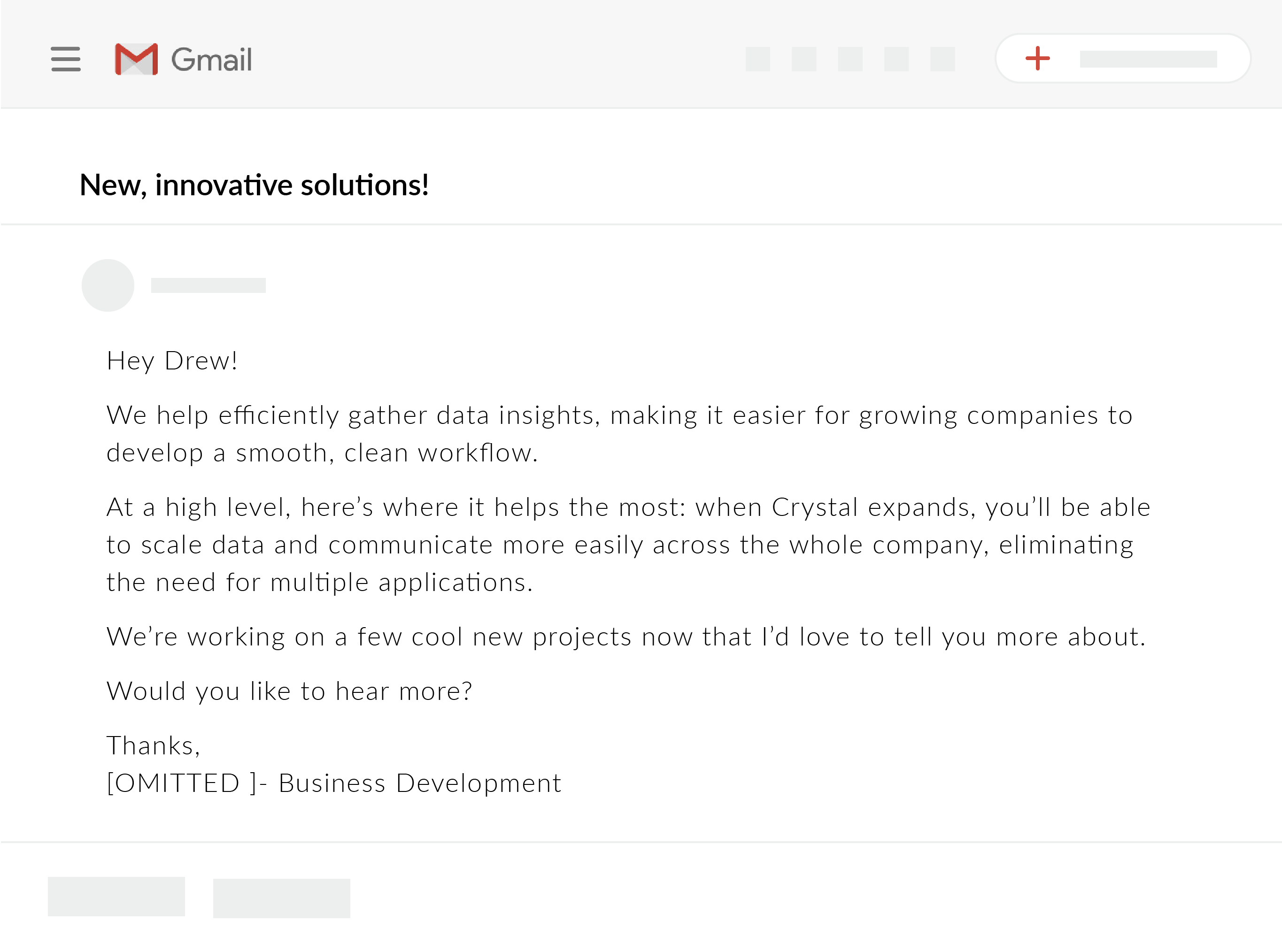
Because this email is more concise, casual, and focused on addressing how it will help me, I immediately feel more connected. I’m curious about the new projects, interested in streamlining workflow, and intrigued by communicating more easily. While this style won’t work for everyone this company may be interested in reaching, it is engaging for myself and others who are similar, and is likely to start a conversation.
Don't start from scratch
Of course, humans are complex and diverse, so personality types cannot provide the answer to every communication challenge. However, if being in sales feels like you’re lost in the forest every day, a personality model gives you a map so you at least know the lay of the land. Personality AI tools like Crystal are more like a GPS, giving you your location on the map in real-time, and delivering smart, automated instructions for where to go next.
Every conversation you encounter will be different, and sometimes you will not have much time to prepare. To help with this problem, we have developed a feature in Crystal called Quick Tips, which gives you scenario-specific advice for writing to your colleagues, clients, and potential customers. Rather than flying blind, it is like having an expert sitting next to you, telling you the best subject, greeting, body, and call to action for your email.

Whether you need to build personal rapport, request meeting times, negotiate, collaborate, or pitch a sale, you can start guessing less and sending emails with more confidence. Outreach professionals from the front lines all the way up to the C-suite can combine these powerful new tools with email marketing software to be more effective in every conversation.
Though I’ve moved on from my sales job in New York, communication has never been more important for my career. I built the first version of Crystal as a way to overcome my own ignorance, and as it has developed into a powerful Personality AI platform, it has come to my rescue and prevented me from shooting myself in the foot on multiple occasions. Now, I am obviously the world’s biggest and most biased cheerleader for Crystal, so you shouldn’t take my word for it.
Add the Chrome Extension today and try using personality insights for free; you’ll notice the difference in your first few responses.
